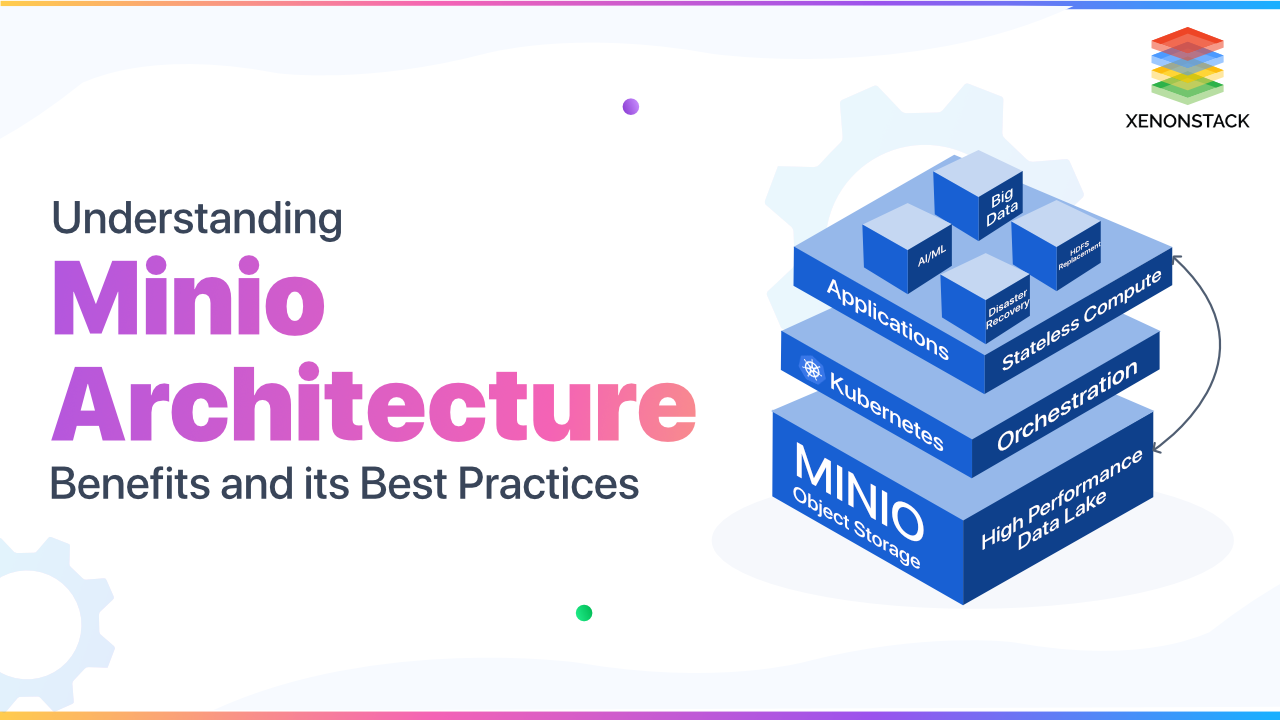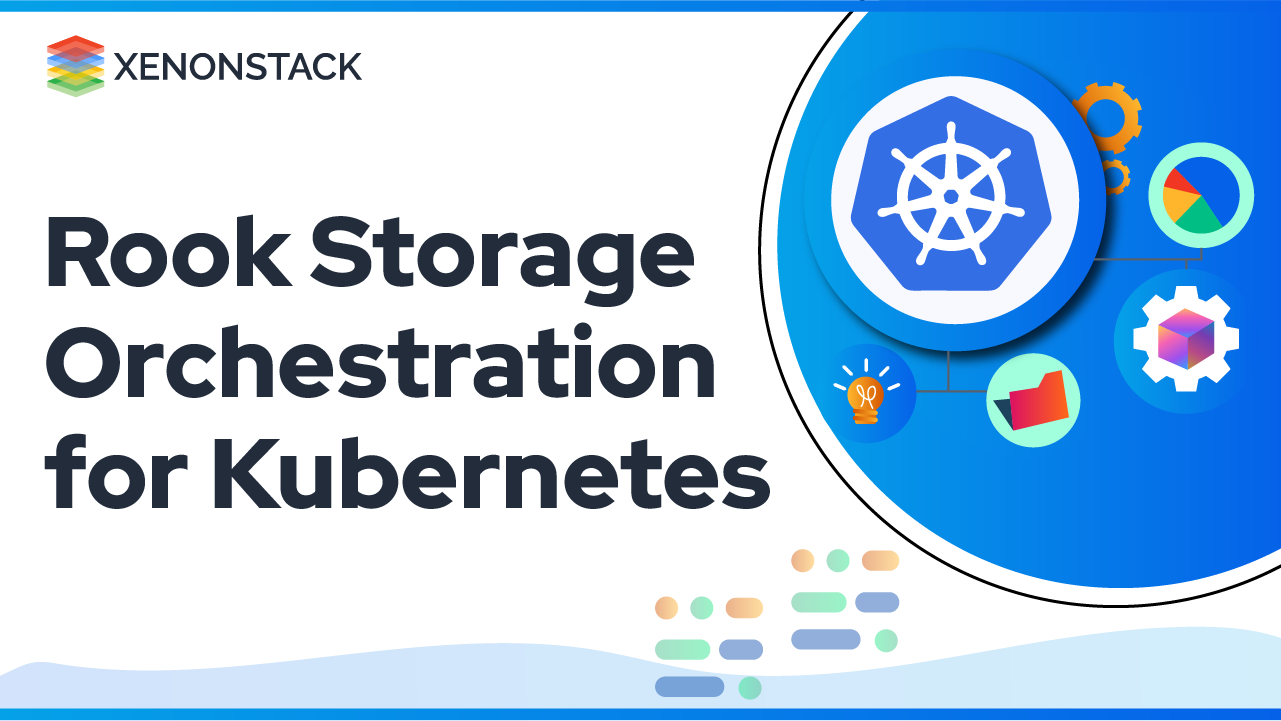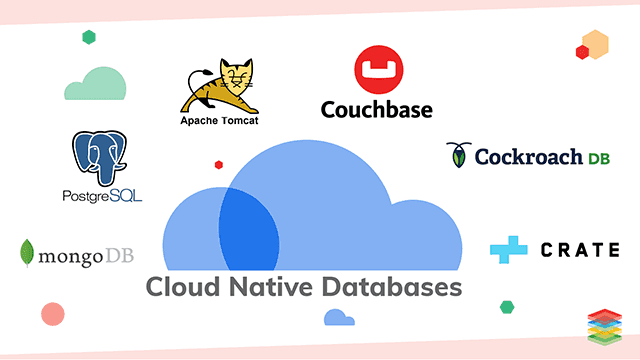
What Is Minio Storage?
Minio is an open-source distributed object storage server written in Go that is designed for private cloud infrastructure and provides S3 storage functionality. It is the best server that is suited for storing unstructured data such as photos, videos, log files, backups, and containers. The size of an object can range from a KB to a maximum of 5TB. Its server is light enough to handle application stacks like Redis, MySql, and Gitlab.
Today's cloud ecosystem features a kind of various cloud strategies designed to suit organizations. Click to explore about, Multi vs Hybrid vs Hybrid Multi-Cloud vs. Private Cloud
How Minio S3 Works Efficiently?
Minio supports multiple pluggable storage backends, including local disk, Kubernetes PVC, NAS, and object storage provided by Public Cloud like Azure and GCP. It supports eraser coding, which replicates & divides the data and spreads it across multiple drives, providing high availability and reliability. It has a single standalone deployment with a single disk or multiple disks, a distributed cluster where it runs on various hosts.
Disks can be EBS, Google Disk, Ceph RBD, ISCSI disk, or directly attached hard disk, or they can be a folder and folder backed by NFS. It uses erasure coding, which divides data into smaller objects and spreads across multiple disks, protecting from disk failure, redundancy, and scalability.
It can also leverage existing object storage solutions like Azure blob storage and object storage on the Google Cloud Platform. It acts as an S3 object layer transparently on top of existing object storage, providing a single interface for accessing multiple Cloud storage. Also, it can be leveraged on existing Docker and Kubernetes environments to provide object storage to Microservices. It can consume the disks in the form of PVC and store data on them.
A cloud OS which controls large pools of computing, storage, and networking resources throughout a datacenter. Click to explore about, OpenStack Cloud Managed Services
Key Benefits of Using Minio
The benefits of Minio are listed below:
-
S3 API Compatibility – Minio supports the Amazon S3 API, making it easy to integrate with existing S3-compatible applications.
-
Data Redundancy – Using erasure coding, Minio ensures that data is replicated and distributed across multiple drives, protecting against data loss.
-
High Availability – Minio can run in a distributed mode, ensuring continuous access even if some nodes or disks fail.
-
Horizontal and Vertical Scaling – Minio scales out by adding more servers or scales up by increasing storage capacity on existing servers.
-
Supports Multiple Pluggable Storage Backends – It works with local disks, Kubernetes PVC, NAS, and public cloud storage like Azure and GCP.
-
Data Security – It offers encryption on both the server and client sides, ensuring secure data transfer and storage.
Step-by-Step Minio Setup Guide
Pre-requisites for implementing Minio:
-
One Ubuntu 16.04 server was set up by following the initial server setup.
-
A fully registered domain name.
-
Following DNS records, set up its server. Follow this hostname for details on how to add them.
-
A record with your server name (minio_server.com) pointing to your object server's IPv4 address.
-
Install Go on Ubuntu 16.04.
-
Installing and Configuring MINIO server.
-
Installing the Systemd Startup Script.
-
Starting a MINIO Server.
-
Securing Access to its Server With an SSL/TLS Certificate.
-
Securely connecting to it with a web Interface using HTTPS.
Why Minio S3 Matters for Storage?
In this distributed mode, a highly available storage system with a single object storage deployment is set up. With distributed, optimally used storage devices, irrespective of location in a network.
Data Protection
In a distributed setup, Minio ensures a highly available storage system with a single object storage deployment. It optimally utilizes storage devices across a network, regardless of location. The distributed mode protects against multiple nodes and drive failures using erasure coding, which activates automatically when at least four disks are available.
High Availability
A standalone Minio server fails if its host disk goes offline. However, in a distributed setup, as long as more disks remain online, data stays safe. S3 actions like read and write operations continue seamlessly, ensuring reliability.
Limits
Minio supports both standalone and distributed modes. The distributed Minio S3 setup requires a minimum of two servers and supports up to 32, with no disk-sharing limits across servers. To scale efficiently, users can spin up multiple Minio instances managed by Kubernetes. S3 list objects and other storage operations remain efficient even at scale.
A new paradigm for developing and running software applications that incorporates technological trends such as cloud computing, containerization, serverless, and microservices. Click to explore about, Cloud-Native Storage Solutions
Best Practices for Minio S3 Security
Minio is a Private Cloud deployed via Docker Compose and Swarm mode. The main difference between these two is that Docker Compose creates a single-host, multi-container deployment, while Swarm mode creates a multi-host, multi-container deployment. This means Docker compose gets started with it on computer-ideal for deployment, testing, and staging environment. Deploying Distributed Minio on Swarm offers a more robust, production-level deployment.
-
Custom Access and Secret Keys: Use unique access and secret keys to secure your Minio S3 setup.
-
Docker Secrets for Credentials: Store custom access and secret keys securely using Docker secrets.
-
Deploying Minio as a Docker Service: Create a Minio S3 service that reads credentials from Docker secrets.
-
Using Custom Key Files: Store access and secret keys in files instead of hardcoding them.
-
Retrieving Container ID: Identify and manage your Minio container efficiently.
-
Starting and Stopping Containers: Properly manage Mini IO containers to maintain uptime.
-
Minio Container Logs: Monitor S3 actions and troubleshoot issues using logs.
-
Monitoring Docker Containers: Track Minio S3 performance and storage health in real-time.
Why Minio S3 is Ideal for Private Cloud
Minio S3 is a high-performance distributed object storage server designed for large-scale Private Cloud infrastructure. It is widely deployed worldwide, with over 164.1M+ Docker pulls.
As a distributed Minio S3 server written in Go, it is open-source under Apache Version 2.0. Whether referred to as Minio or Mini IO, it ensures scalability, reliability, and seamless S3 actions, making it the preferred choice for cloud storage solutions.
Next Steps for Minio S3 Deployment
Talk to our experts about implementing Minio S3 for scalable object storage. Learn how industries and different departments use S3 actions like data retrieval and management to enhance workflows and decision-making. Minio optimizes cloud storage operations, improving efficiency and responsiveness.


